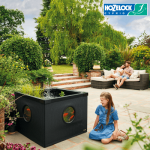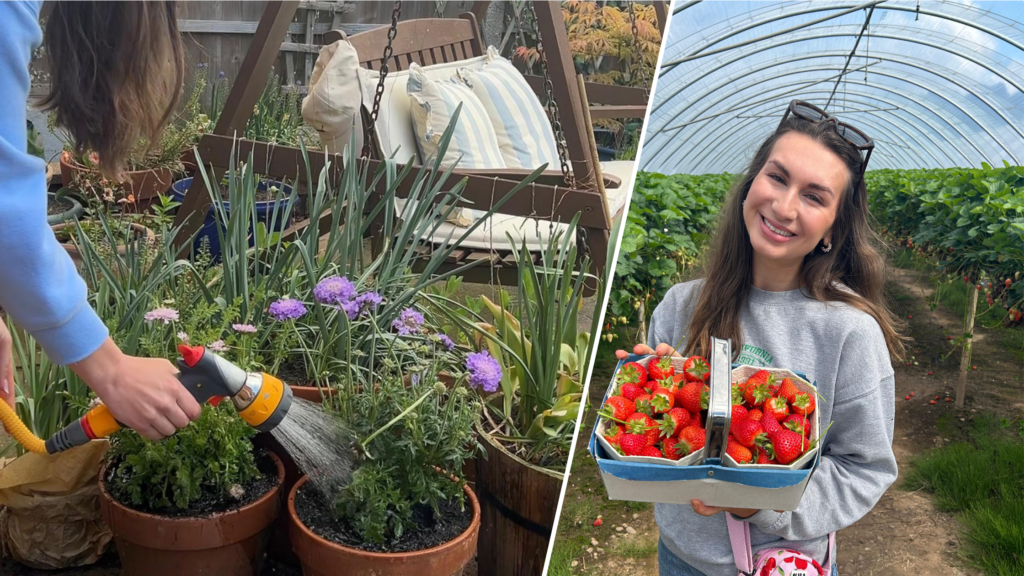Ah, hydrangeas—those lush, blooming wonders that grace our gardens with vibrant clusters of flowers.
Whether you’re a seasoned gardener or just getting your hands dirty for the first time, hydrangeas offer a delightful touch to any outdoor space.
But did you know that with a bit of garden wizardry, you can change the colour of your hydrangeas? Yes, really!
Here’s how you can transform your garden’s hydrangeas into a palette of pinks, purples, and blues.
The Colour Connection: Soil pH and Hydrangeas
The secret to changing the colour of your hydrangeas lies in the soil’s pH level—the measure of how acidic or alkaline your soil is. In simple terms, soil pH determines whether your hydrangea blooms will be blue, pink, or somewhere in between.
- Acidic Soil (pH 5.5 or lower): Blue blooms
- Alkaline Soil (pH 7 or higher): Pink blooms
- Neutral to Slightly Acidic Soil (pH 5.5 – 6.5): Purple or a mix of blue and pink
Now, before you rush out with a pH test kit, let’s delve into how you can make these magical colour changes happen.

Turning Your Hydrangeas Blue
If you’ve always dreamed of blue hydrangeas, you’ll need to make your soil more acidic.
Here are a few tips to help you achieve that dreamy shade:
- Add Aluminium Sulphate: This is the go-to solution for many gardeners. You can find aluminium sulphate at most garden centres. Mix it with water according to the package instructions and apply it to the soil around your hydrangeas. Start early in the spring for the best results.
- Use Organic Matter: Combine organic matter like coffee grounds, pine needles, or composted oak leaves into the soil. These materials naturally lower the pH, helping to achieve that lovely blue hue.
- Mulch with Pine Bark: Pine bark mulch not only helps retain soil moisture but also gradually increases acidity as it breaks down.
Blushing Pink: Raising the pH
Prefer pink hydrangeas? You’ll need to make your soil more alkaline.
Here’s how:
- Add Garden Lime: Lime is your best friend when it comes to raising soil pH. Sprinkle garden lime around the base of your hydrangeas and gently work it into the soil. Be sure to test your soil regularly to avoid overdoing it.
- Use Bone Meal: This organic fertiliser not only boosts the alkalinity but also adds essential nutrients to your soil, promoting healthy blooms.
- Avoid Acidic Fertilisers: Steer clear of fertilisers that contain ammonium sulphate or sulphur-coated urea, as these can make your soil more acidic.


Somewhere in Between: Purple Hydrangeas
For those who like a bit of both worlds, a pH level between 5.5 and 6.5 will give you purples or a delightful mix of pink and blue.
Achieving this balance can be a bit tricky, but a good starting point is to amend your soil gradually and observe the results over a growing season.
A Few Tips and Tricks
- Test Your Soil: Before making any changes, it’s a good idea to test your soil’s pH. You can pick up a soil pH test kit from your local garden centre.
- Be Patient: Changing the colour of your hydrangeas isn’t an overnight process. It can take several weeks—or even an entire growing season—to see significant changes.
- Mind the Variety: Not all hydrangeas are colour changers! The classic bigleaf hydrangea (Hydrangea macrophylla) is the most responsive to pH changes. Other varieties, like panicle hydrangeas (Hydrangea paniculata), will stay true to their colour regardless of soil pH.
Whether you prefer calming blues, romantic pinks, or a unique mix of purples, hydrangeas can add a pop of colour to your garden.
With some knowledge about soil and a bit of patience, you can create a unique hydrangea haven that reflects your gardening style.
So, grab your trowel, put on your gardening gloves, and let the hydrangea magic begin!


































